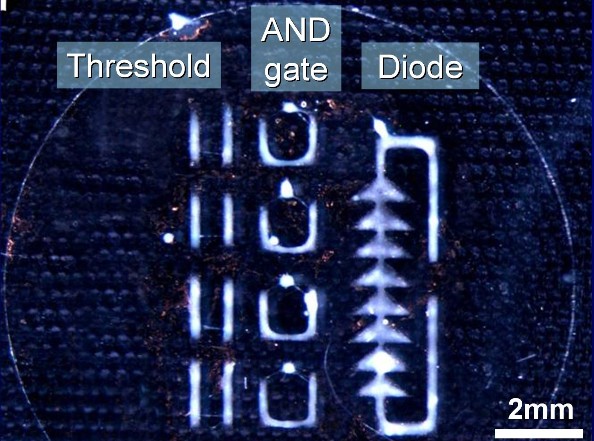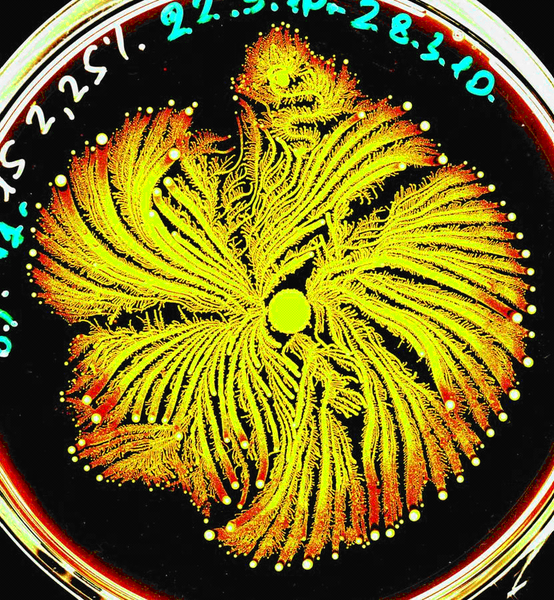
Where is humanity now; and where is it going? What does it mean to be human? How close are we to immortality and what do we do once we get there? All of these questions and more were the subject of close scrutiny this past week at ICON TLV. Movie screenings and a series of lectures and panels challenged the imagination regarding these thought-provoking issues.
Futurist Ray Kurtzweil’s film The Singularity is Near presents a glittering portrait of humanity’s future. Within the next thirty years, Kurtzweil predicts, technology will advance so much that immortality will no longer be a dream. The human lifespan will no longer be defined by the shelf life of the biological body. Instead, mind-machine integrative systems will be available, so that memories, thoughts and ideas will be downloaded and retained after the biological body has passed. Man will no longer be contained in a body, but extended and maintained by machinery. Intellect will be superhuman due to the capabilities this integration will confer. The point in time at which this will occur is referred to as the technological singularity.

Against this compelling vision of the future, scientists presented their work at ICON TLV, work that stands at the forefront of biological technological research. Elisha Moses of the Weizmann Institute was able to manipulate neurons in a culture to form a basic, biological calculator . To do so, the neurons were not let grow as they naturally would in the human brain. Instead, they were grown in one dimension, in patterns mimicking basic electronic equipment. In this way, biological neurons were made to execute calculations in a manner that a computer would. As opposed to machinery, the human brain uses synaptic connections in three dimensions, and executes calculations such as these with fewer neurons and higher efficiency. This primitive biological computer requires far more maintenance and energy and is far less user-friendly than existing electronic equipment. Even though there’s a long way to go before such an artificial biological system operates with the sophistication of a natural biological mind, this research does open stunning worlds of possibility.

Adi Shklarsh, yet another sci-fi scientist, is working on harnessing the computational abilities of groups in nature to solve complex problems with which current traditional computation struggles. She harnesses strategies used by ant colonies to find food and signal to other to solve spatial problems and search problems. Similar potential lies in bacteria, which signal to one another in cultures in order to communicate, and in termites, who build complex and intelligently structured mounds. Such research is another baby step toward bigger human-nature-machine interactions.
Are we still human?
If humans and machines merge, are we still human? Advances in technology have already combined man and machine. Prosthetics that respond to neuronal commands for paralytic patients are one instance of this. Pierpaolo Petruzziello is an amputee who successfully had electrodes attaching his brain to a machine arm. Using only his thoughts, he operated a robotic limb external to his physical self. Is Petruzziello a cyborg? For that matter, how about anyone who wears optical glasses, or uses a cane?
These questions become even more difficult when considering technological advances that do not directly interfere with man’s physical being. Since the industrial revolution, mankind has become increasingly dependent on technology for the simplest activities. Arguably, this began even sooner, with the dependence of mankind on sticks and stones to hunt and process food. A century and a half ago, technology’s influence may have been felt less directly, as people simply wore factory-made clothing and cast iron and steel goods became available. But technology is now intimately and perhaps inextricably woven into our lives. One can hardly imagine the world functioning a day without internet, without vehicles, without electricity.
As we enter the Digital Age, the very way in which we process information is changing. In the Middle Ages, before the invention of the printing press and the (relatively) easy dissemination of information, the merit of scholars was assessed by their ability to memorize major texts. This approach is now evolving, as the sum of all human knowledge is available a Google search away. You may remember memorizing the periodic table of elements in a high school chemistry class. An average high school student today could probably find the atomic weight of plutonium on an iPhone faster than his teacher could recall it from memory. And most of us are dependent on the spellchecker in our email and word processors to an extent that would make our third-grade teacher cringe. It’s a fact: the world is changing, and with it evolve the skills necessary to succeed in it. Our very nature is evolving.
The Singularity is Near goes on to prophesy generous advances in the capacities of mankind. Synthetic cells will swim in our blood stream, each carrying more oxygen than all of our biological blood cells combined. A chip will rest in our brains, making the contents of the internet continually accessible, allowing the sum of the world’s knowledge and computational abilities to reside in our very bodies. Artificial intelligence will be indistinguishable from human intelligence, as the neuronal processes behind thoughts, emotions and behaviors will have been comprehensively uncovered. These predictions are based on the exponential rate of the advances in technology observed throughout the history of humanity. A computer with the same capabilities as a cell phone once took up a whole desk, a whole building, a stadium filled with geniuses with abaci. If we follow the trends into the future, the same computational abilities will be packed into a machine the size of a speck of dust.

As befitting a science fiction festival, the vast majority of opinions voiced at ICON TLV regarding the future were intoxicatingly fantastic. Current state of affairs, in which dystopian scenarios of global warming and overpopulation dominate, were set aside in favor of brilliant futures filled with gadgets swimming through our bloodstream and lodged in our brains, conferring endless youth and solving all of man’s problems. Close examination may collapse this particular house of cards – but why fight such a welcome relief from the harsh realities of the present?






Wow.. I loved the movie and the implications are quite astounding. Keep up the good reporting!
I regret missing ICON this year
Comments are closed.